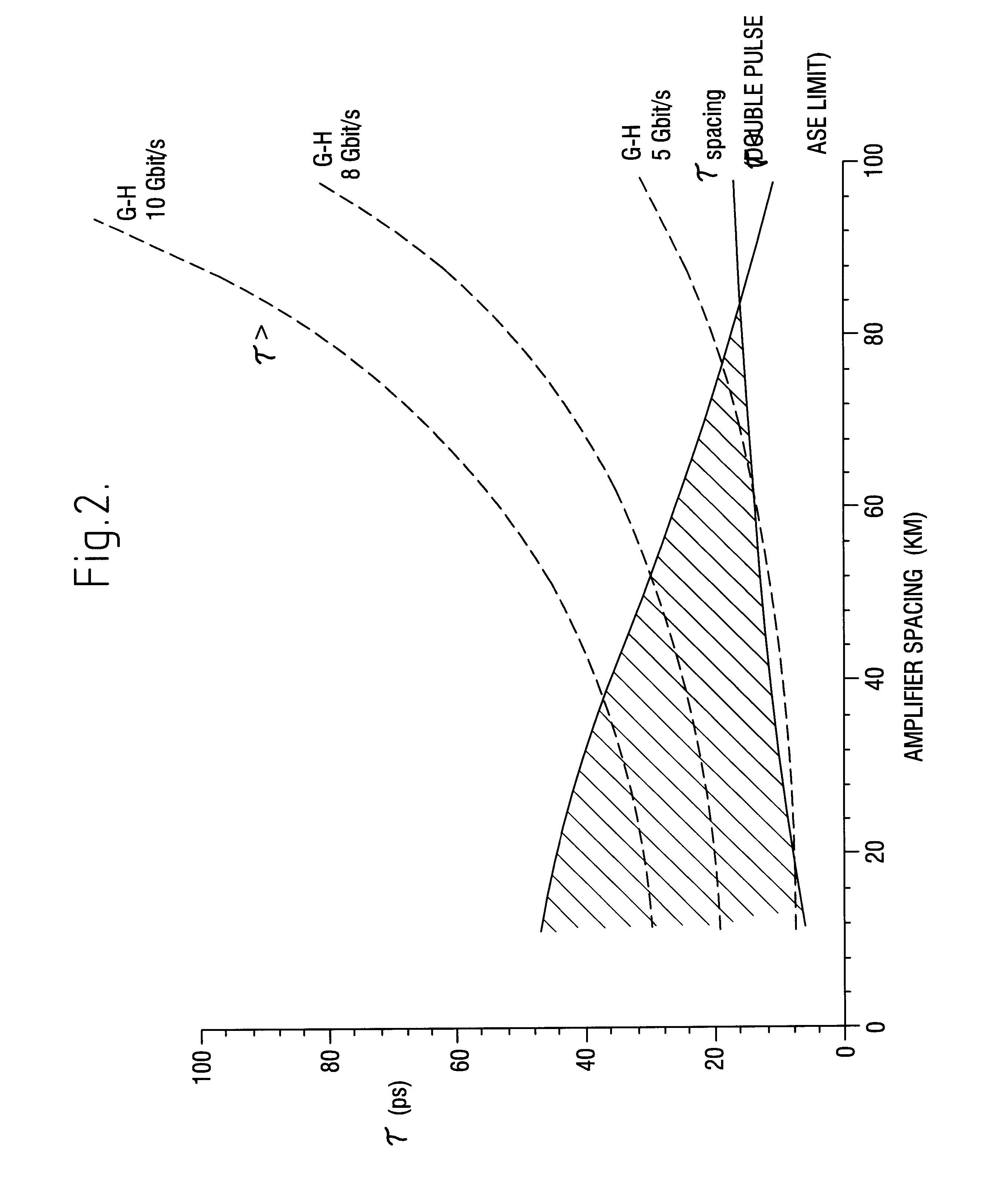Method and apparatus for transmitting information
a technology of information transmission and transmission line, applied in the direction of transmission monitoring, optical elements, instruments, etc., can solve the problems of pulse collapse, error, and energy loss of pulses propagating down the optical fibre transmission line,
- Summary
- Abstract
- Description
- Claims
- Application Information
AI Technical Summary
Problems solved by technology
Method used
Image
Examples
Embodiment Construction
FIG. 1 shows the calculated limits of t.sub.spacing, t.sub.ASE and the Gordon-Haus limit for 5.8 and 10 Gbits / s data rates for single soliton / bit transmission. Transmission is possible for amplifier spacings for which there is a pulse width that is simultaneously less than t.sub.ASE, greater than t.sub.spacing and greater than the G-H bit rate limit. This window of operation is shown shaded in FIG. 1. It can be seen that for large inter-amplifier spacing of say 50 km one is limited to data rates of up to about 5 Gbits / s.
Referring to FIG. 2, there is shown the calculated limits for the two soliton per bit transmission of the present invention in which the reduced jitter benefit has not been included as this may not pertain with soliton-soliton collapse. The effect of increasing the average power without having to operate with a shorter soliton pulse can be seen to open the operating window to that shown by the shaded area of FIG. 2. Thus an 80 km amplifier spacing can be achieved for...
PUM
 Login to View More
Login to View More Abstract
Description
Claims
Application Information
 Login to View More
Login to View More - R&D
- Intellectual Property
- Life Sciences
- Materials
- Tech Scout
- Unparalleled Data Quality
- Higher Quality Content
- 60% Fewer Hallucinations
Browse by: Latest US Patents, China's latest patents, Technical Efficacy Thesaurus, Application Domain, Technology Topic, Popular Technical Reports.
© 2025 PatSnap. All rights reserved.Legal|Privacy policy|Modern Slavery Act Transparency Statement|Sitemap|About US| Contact US: help@patsnap.com



